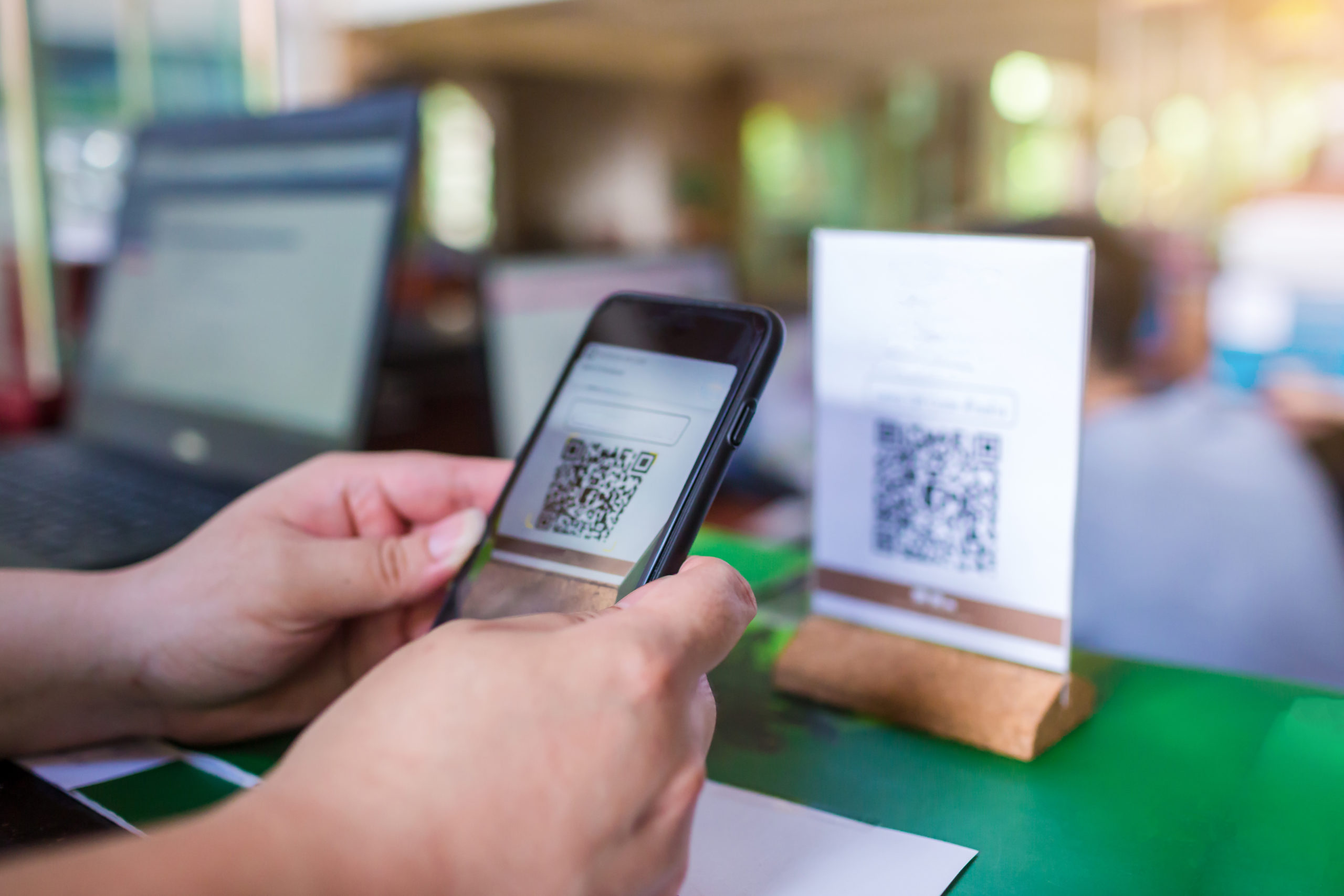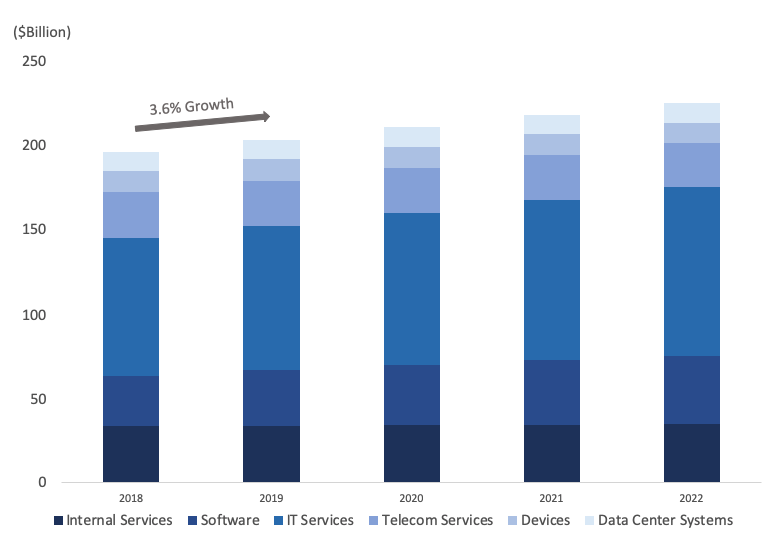“Let’s go invent tomorrow instead of worrying about what happened yesterday.” – Steve Jobs
As retail managers, it is vital to stay up-to-date on the latest technology trends. Not only will this help keep retail stores operating smoothly and efficiently, but it can also provide competitive advantages over other retailers.
In retail stores, wholesalers, and online shopping, new technologies help retail business performance, enhance inventory assortments, optimize supply chain processes, and track pricing.
In addition, customer data management and tracking tools increase customer satisfaction and encourage loyalty by enhancing shoppers’ in-store experience. This blog discusses some important technology trends that will continue to impact retail operations and customer experience.
Retail Technology Trends
● The global retail market digital transformation estimated value was $143.55 billion (USD) in 2020 and is expected to reach $388.51 billion by 2026. (MordorIntelligence)
● Global spending on retail technologies is predicted to grow by 3.6% annually. (DNX Ventures)
Figure 1: Retail IT Spending Forecast in Billions of USD. (Gartner, 2022)
“Our business is about technology, yes. But it’s also about operations and customer relationships.” – Michael Dell
I) What are retail (Quick Response) QR codes?
QR (Quick Response) is read and understood by mobile devices. This allows marketers to increase the reach of advertising exposure to customers. For instance, customers access promotional information by scanning billboards, magazines, web pages, etc.
QR codes provide additional information about products or services conveniently via the user’s device and can be scanned in-store.
What value do QR codes bring to a business?
QR Codes in retail businesses increase the efficiency of payments at the checkout counter. Several platforms such as Walmart, PayPal, and Costco offer QR Code payment (in-store) options for efficient checkouts.
II) What is Radio-frequency identification (RFID) technology?
In the retail industry, RFID technology assists retailers in identifying items using radio waves. It transmits data from an RFID tag to a reader, providing accurate, real-time data to inventory.
How does RFID technology benefit retailers and customers?
RFID improves retail inventory control accuracy and stock replenishment reliability, leading to increases in sales, and customer satisfaction. Moreover, RFID technology provides real-time information on inventory levels, retail space, and stock details, including quantities, models, colors, and sizes.
III) What is Zero User Interface in Retail?
The purpose of zero user interface (Zero UI) is to reduce or eliminate barriers between customers and devices and have a more seamless interaction with technology and reduce the need to interact with sales associates. The idea is to promote health and safe in-store customer experiences.
- 77% of customers expect non-touch interactions for customer experiences. (Capgemini)
- Over 62% expect the same touchless experience even after the current pandemic subsides. (Capgemini)
How does Zero User Interface benefit the retail Industry?
Due to the pandemic, brick-and-mortar retailers have become responsive to heightened consumer concerns regarding (shopping in-store) cleanliness. Thus, zero IU allows customers to interact with technology while minimizing the need to touch surfaces.
- 64% of shoppers surveyed said they had walked out of a store due to poor physical cleanliness appearance and disorganization (ServiceChannel, 2019)
Zero IU retail technologies help consumer confidence in the following ways:
- Addresses in-store health and safety issues that are driven by market demand for touchless interfaces.
- Encourages hands-free and (screenless) smart interface revolutionizing every touch point.
- Facilitates human-centric interaction and maintains efficiency, security, privacy, and choice.
lV) What is Augmented reality (AR) used for in retail?
In the retail industry, AR technology creates digital (personalized marketing) experiences that enrich the relationship between consumers, brands, and retailers. Additionally, AR is accessible by any device; home computers, mobile devices, or store kiosks and at any retail locations. Retailers have traditionally relied on print advertising campaigns or other media to promote products.
What value does AR add to retailers and customers?
AR helps retailers analyze customer behavior, test product samples, boost brand engagement, and augment sales. In addition, 3D experiences can improve product research and discovery, resulting in higher sales.
L’Oréal’s Modiface is one of the best-known examples of AR within retail, with the feature allowing customers to digitally try on make-up through the brand’s app. L’Oréal has also introduced Modiface to Amazon customers on mobile, allowing them to also digitally overlay make-up looks onto live photos and videos.
V) What is a Smart checkout?
Smart Checkout analyzes the shopper’s basket composition, loyalty card, and payment method.
Smart Checkouts is a retail technology that provides businesses and customers with the following benefits:
Detected suspicious transactions
In the retail industry, the primary function of smart checkouts is to prevent theft and ensure that the in-person retail experience is positive. Smart checkouts are equipped with cameras and weight scales to help identify items.
For example, when a product in the camera view does not match the scanned barcode or is too light according to the weight scale, an alarm is triggered, and an employee or sales associate must confirm that item swapping has not occurred. In addition, the system can show when customers do not scan items.
Optimizes the checkout process
Smart checkouts are user-friendly in functionality. For example, when customers log items without barcodes, such as produce, smart checkout offers customers simplified product lists from which to choose.
Deters shoplifting
The presence of cameras at eye level on checkouts is a solid deterrent to would-be shoplifters. When shoplifters realize their transaction is being recorded, they tend not to risk stealing items.
Predicts consumer patterns
Smart checkouts can identify which items are susceptible to shoplifting or which products are difficult to scan. This information is valuable for loss prevention and customer experience.
Provides retailers with important information
Smart checkouts collect extensive amounts of data relating to consumer behavior. This data is analyzed to produce detailed reports and suggestions for retail decision-makers.
Reduces checkout waiting times
Smart checkout reduces the length of checkout lines and waiting times.
- “Retail store visits often feel like a wasted afternoon if the lines are long and there’s nothing else to do. And word gets around: about 81% of shoppers who had a bad checkout line experience will tell others about it.” (Shopify, 2022)
As retail managers, staying up-to-date on the latest retail technology trends is essential. Not only will this keep your store running smoothly and efficiently, but it provides competitive advantages against other retailers. New technological advancements augment business performance, inventory assortments, supply chain processes, and pricing strategies in retail stores, wholesaler outlets, and online shopping.
In the retail industry, brick-and-mortar stores are not going extinct anytime soon; they are being enhanced with customer data management tools that increase customer satisfaction and encourage loyalty by enhancing shoppers’ in-store experience. Here we discuss some of the most important retail technology trends that will continue to impact in-store retail operations and the customer experience in 2022 and beyond.
Thank you for reading our article!
TimeWellScheduled is a secure, online time and attendance software that is 100% tailored to meet your scheduling needs! In addition, TimeWellScheduled facilitates employee attendance tracking & payroll tasks and enhances your staff management capabilities. Plus, our Service is free for up to 10 employees!
Click: here to download our (Excel) employee scheduling template; IT’S FREE!






